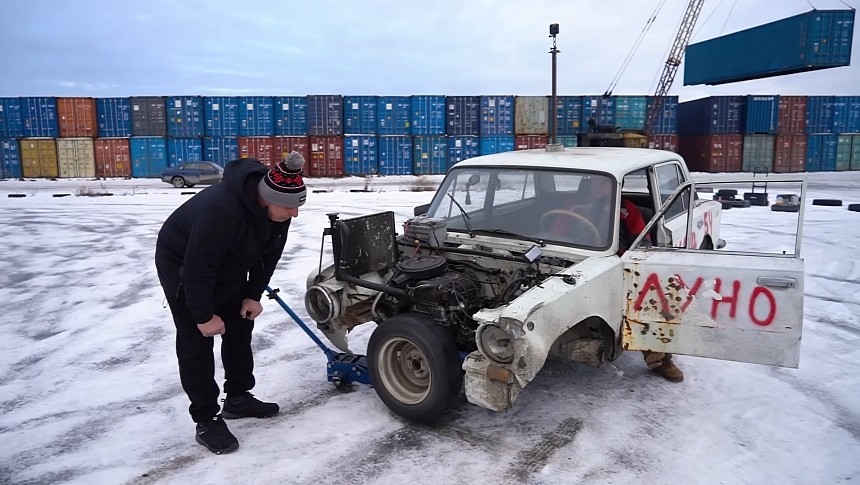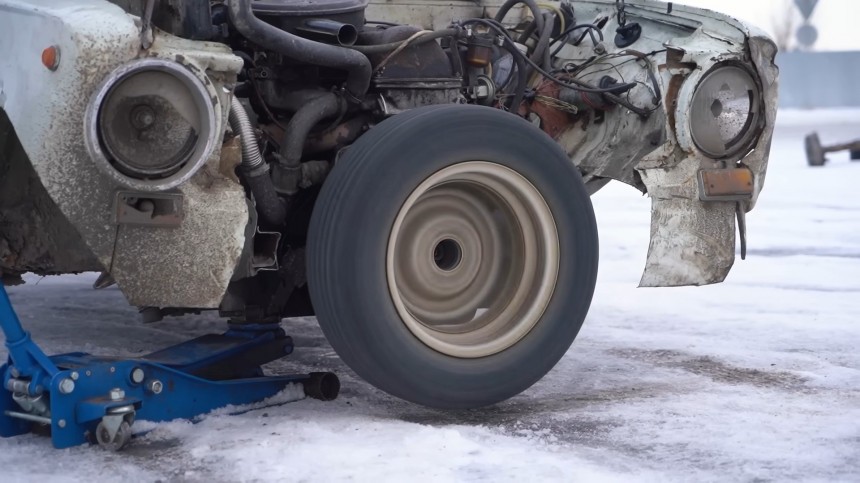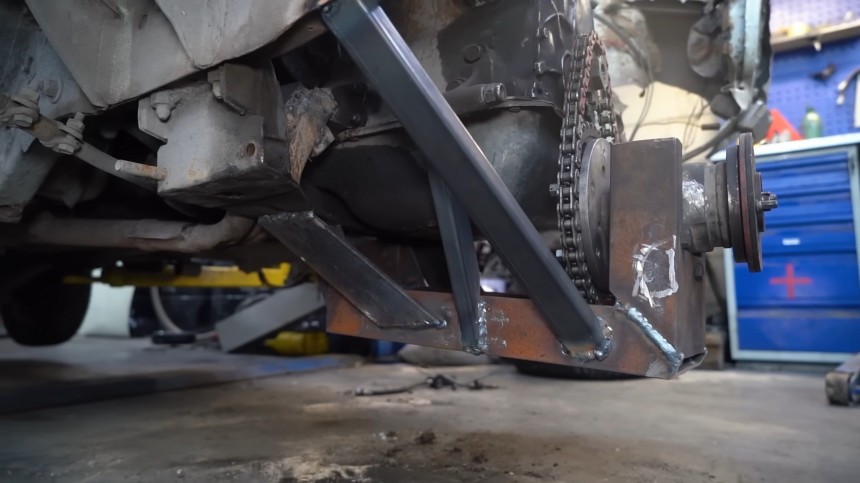‘How much horsepower is required for power steering?’ is probably the question least likely to be asked at any car-related event. But the fact of the matter is that all mechanical driving aids and comfort equipment (steering, brakes, alternator, air conditioning compressor, and whatnot) rob engine power. Certain brilliant mechanical minds from Siberia decided to play the antagonist in yet another episode of ‘Mainstream Engineering is So Last Millennium Ago.’
As we all know too well, engine outputs from before 1971 are dwarfing the following years’ specs (on paper). Gross v net figures consider the ‘as-installed’ performance, as opposed to the reading provided by a bare engine with a dyno attached to the crankshaft. This is the keyword here – crankshaft. Typically, this vital part of a combustion engine feeds mechanical energy to all its ancillaries (with the notable exception of the starter).
In some particular applications, power take-off stub shafts are installed on specific vehicles to use the engine as an external drive for various applications. However, passenger cars don’t feature this ability. Leave that to the Garage 54 team: the Novosibirsk-based wrench elves took one good look at a 1.3-liter Lada and thought it would be the perfect test mule for a new ideology of power.
No, not that kind of Cold War approach – although it is proper winter in Siberia right now – but power steering. More to the point, the endeavoring band constructed the direct-power-steering system consisting of one wheel mounted straight onto the crankshaft. Yes, it is exactly as absurd as it sounds; since the engine is longitudinally mounted in its bay, the attached wheel sits perpendicularly to the other two on the rear axle.
If the numbers don’t add up, it's due to the front wheels having to be removed for the car to have a mild chance of turning. The ultimate purpose of this Russian study of alternative engineering is to see if the layout effectively makes the Lada spin around. Naturally, with the third wheel bolted onto the crank, there’s no way of controlling its motion.
Once the engine is on, the wheel starts spinning. The trick is to keep it turning – under piston power, obviously – with the car on the ground. The video below is another visual record of the recipe for success: keep failing until you win. It’s no different with the Siberians: the front wheel, hardwired to the crankshaft, can’t build up enough momentum to make the car spin.
The 65-PS, 98-Nm inline-four (64 hp, 72 lb-ft) lacks the necessary might to overcome the tire's friction against the ground. The Russians even relied on cheat codes to get it to work, but the small engine doesn’t fire up sufficient torque even with the rubber on ice. Ultimately, the makeshift wheel gives up and breaks free from the crank.
The updated version of this experiment doesn’t turn any better (pun intended). A takes thwelded frame to support a ratio-reducing assembly, the three-wheel Lada with direct power steering won’t act like a spinning top. Replacing the driver with a lightweight version can't cut it, either - the front end of the Lada is too heavy for the engine to overcome the friction.
Now, considering past experiments undertaken by the Garage 54 pioneers, I suspect this isn’t the end of this affair. They’ll come up with something to go around the ‘no replacement for displacement’ law of internal combustion.
In some particular applications, power take-off stub shafts are installed on specific vehicles to use the engine as an external drive for various applications. However, passenger cars don’t feature this ability. Leave that to the Garage 54 team: the Novosibirsk-based wrench elves took one good look at a 1.3-liter Lada and thought it would be the perfect test mule for a new ideology of power.
No, not that kind of Cold War approach – although it is proper winter in Siberia right now – but power steering. More to the point, the endeavoring band constructed the direct-power-steering system consisting of one wheel mounted straight onto the crankshaft. Yes, it is exactly as absurd as it sounds; since the engine is longitudinally mounted in its bay, the attached wheel sits perpendicularly to the other two on the rear axle.
Once the engine is on, the wheel starts spinning. The trick is to keep it turning – under piston power, obviously – with the car on the ground. The video below is another visual record of the recipe for success: keep failing until you win. It’s no different with the Siberians: the front wheel, hardwired to the crankshaft, can’t build up enough momentum to make the car spin.
The 65-PS, 98-Nm inline-four (64 hp, 72 lb-ft) lacks the necessary might to overcome the tire's friction against the ground. The Russians even relied on cheat codes to get it to work, but the small engine doesn’t fire up sufficient torque even with the rubber on ice. Ultimately, the makeshift wheel gives up and breaks free from the crank.
Now, considering past experiments undertaken by the Garage 54 pioneers, I suspect this isn’t the end of this affair. They’ll come up with something to go around the ‘no replacement for displacement’ law of internal combustion.
















































